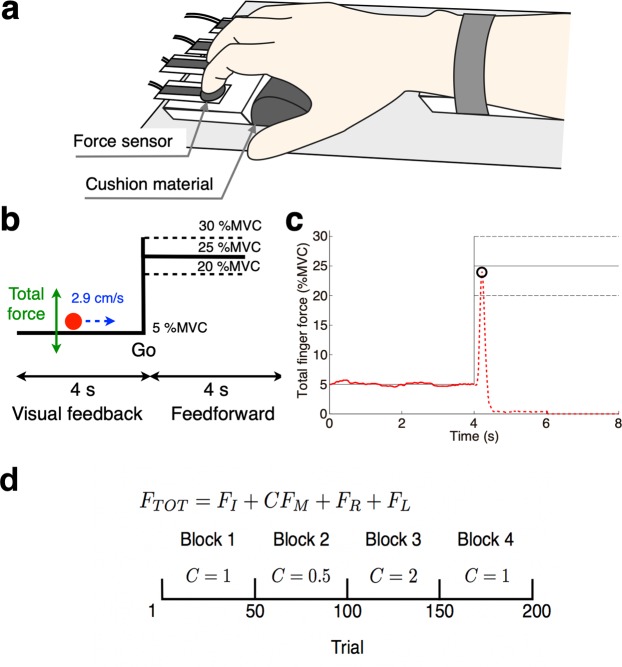Figure 1.
Experimental setup and analysis method. (a) Participants placed their fingers on four custom-made force sensors and their palm on a cushion material. (b) A screen was displayed to the participants during a multi-digit force-sharing task. A cursor (red circle) moved from left to right. Its horizontal speed was constant, while its vertical position was proportional to the total force generated by the four fingers. The cursor was visible during a visual feedback phase (left half of screen) but disappeared during a feedforward-control phase (right half). (c) Typical force trajectory in a participant’s ‘success’ trial. A moving cursor was visible on the solid trajectory but invisible on the broken trajectory. The open circle indicates the force peak at which a stationary cursor appeared at the end of the trial. (d) Task schedule of multi-digit force-sharing task. Total finger force FTOT consists of the finger forces generated by the index (FI), middle (FM), ring (FR), and little (FL) fingers. Middle finger force FM is weighted by the coefficient C. The value of weight coefficient C was changed according to the sequence in the bottom panel.

